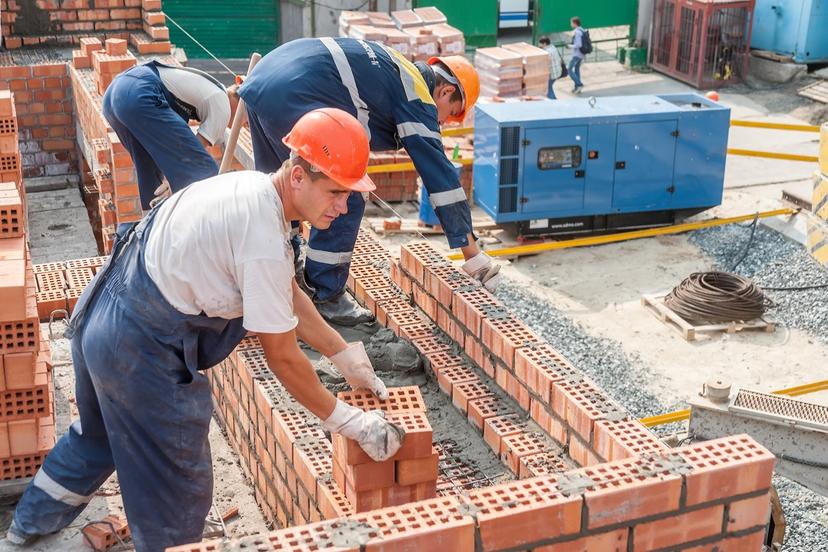Trades

Industry Outlook
Skilled trades workers will continue to be needed by businesses and homeowners for new construction, maintenance and repairs, and renovations. Many trades are affected by the state of the economy. During times of economic slowdown, construction and related building and renovation activity diminishes as companies cut their budgets. Homeowners also scale back on spending on home repairs and improvements unless these things are absolutely necessary. The coronavirus pandemic, which started in late 2019, caused an economic slowdown in the U.S., as well as throughout the world, as many states have had lock-downs to protect public health. Some construction projects were delayed, however, construction work, for the most part, was deemed essential and work continued. The accelerated distribution of the COVID-19 vaccine in 2021 will bolster the economy, with businesses operations and construction activities projected to increase. Spending will increase for such things as carpentry, electrical work, masonry, plumbing and pipefitting, and other trade and craft services. The employment growth rate varies depending on the sector, but overall, there will be employment opportunities in the years to come for those in skilled trades.
The carpenters industry was projected to have a drop in revenue of nearly 5 percent in 2020. However, post pandemic, the pent-up demand in construction markets will contribute to strong revenue growth through 2025. This post-pandemic recovery applies to many other sectors of the trades industry. Growth in construction of commercial and nonresidential properties, including offices, retail spaces, warehouses, and schools, will increase the need for carpentry services as well as services from other trades. For example, plumbers will have accelerated growth through 2025. The masonry will rebound post pandemic with steady growth forecast for the coming years. And the electricians industry is projected to have robust growth through 2025.
The Department of Labor predicts 10 percent employment growth for construction trades workers through 2028, which is faster than the average. Carpenters will have faster than average employment growth of 8 percent. Many of the job opportunities will be due to the growth of new-home construction. Carpenters will also be needed to help homeowners with their remodeling needs. Carpenters with experience in repairing and replacing roads and bridges will continue to be needed; job growth, however, will depend on the budgets of federal and state governments. The increased use of prefabricated and modular components may also affect employment growth for carpenters, as much of the manufacturing is done in separate facilities. Job openings will also vary based on geographic areas; there will be more opportunities for carpenters in areas that have large populations or that are experiencing population growth. The Department of Labor reported that the states that employ the largest number of carpenters are California, New York, Florida, Texas, and Pennsylvania.
Electricians will have many job opportunities the next few years. The Department of Labor (DOL) predicts 10 percent employment growth through 2028, which is much faster than the average. Businesses and homes will need electricians for electrical wiring and installation. More jobs will be available for electricians due to construction industry growth. Manufacturing plants will require electricians to help them install and maintain electrical systems as well as maintain older equipment. Electricians who are skilled in electronic systems repair as well as in other areas, such as wiring of industrial components and installation of alternative power sources like solar photovoltaic, will have good job prospects.
Plumbers, pipefitters, and steamfitters will also experience strong job growth. Employment will grow by 14 percent through 2028, according to the DOL. More job opportunities are expected due to the increase in new building construction and stricter standards for efficient plumbing systems. Plumbers and related workers will be needed to install low-flow toilets and water heaters in buildings and homes. Pipefitters and steamfitters will be needed at power plants and factories for retrofitting work. There will also be job opportunities for sprinklerfitters, as buildings are now mandated to have fire suppression systems. Job opportunities are expected to be best for those with knowledge of Building Information Modeling (BIM), which is digital diagramming of a building’s physical systems. As with other trades, the need for plumbers, pipefitters, and steamfitters varies depending on the economy. When the construction industry slows, employment may decline, but there will always be a need to repair and maintain plumbing and pipe systems. Plumbers and related workers will find stable employment in manufacturing and in other areas outside of construction.
The outlook is also good for masonry workers, with 11 percent employment growth projected through 2028, as reported by the Department of Labor. The growth of the construction industry will create more job opportunities for masons. In areas with growing populations, more apartment buildings, schools, hospitals, and other structures will be built in brick and block. Brickmasons and blockmasons will have good job prospects as a result. Masons will also be needed for restoration work on brick buildings and on brick exteriors. Cement masons will be needed for new construction as well as repairs of highways, bridges, factories, and residential buildings. The DOL also notes that hurricane-prone areas such as Florida are choosing cement as a top construction material because of its durability. As cement use grows in popularity, cement masons will continue to have strong job prospects.
The DOL forecasts faster than average employment for segmental pavers, who will be in demand to install durable walkways and driveways. Terrazzo workers and finishers will have much faster than average employment growth. While schools, government buildings, hospitals, and other such buildings will continue to need terrazzo workers to create attractive floors, there may be increased demand for less expensive options such as polished cement floors. Stonemasons will have faster than average job growth. More homeowners are choosing natural stone for its unique look and durability. As the economy strengthens and people’s incomes improve, the demand for stonemasons is expected to increase.
